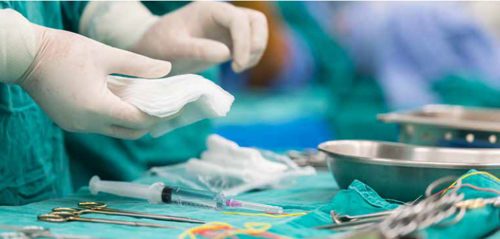Sustainability
Time to Inject Reusable Practices
Study finds plenty of room for waste reduction in intravitreal injections. Roibeárd O’hÉineacháin reports.

Roibeard O’hEineachain
Published: Thursday, December 1, 2022
Ophthalmologists who perform intravitreal injections can reduce the environmental impact of the procedures by taking advantage of reusable instruments and multi-use medication vials and eliminating post-injection topical antibiotics, according to the results of a Royal Australian and New Zealand College of Ophthalmologists (RANZCO) fellowship survey presented by Sukhpal S Sandhu FRANZCO.
With the increasing demand for intravitreal injections, he said ophthalmologists try to standardise and streamline the pathway for patients—but there remains considerable variation in the procedure and the equipment used.
To consider the range of intravitreal injection practices and look at options for reducing waste, RANZCO’s sustainability committee sent a survey to its organisation’s members regarding the equipment and materials they used when performing intravitreal injections.
Nearly all 405 respondents (96%) said they perform the procedures in an office or treatment room, whereas 3.7% said they do so only in operating theatre. In addition, nearly all (99%) said they use masks, while a minority (up to 11%) said they use additional personal protective equipment, such as gowns and shoe and head coverings.
For local anaesthetics, 289 (78.7%) respondents said they use sterile minims—and, of those, 116 (40.1%) use a new minim for each patient. In addition, 236 (64.3%) respondents reported using an injected sub-conjunctival local anaesthetic, of whom 87 (36.9%) use a single vial per patient. Regarding topical anaesthetics before subconjunctival ones, 185 (78.4%) reported minim use.
The survey also showed a marked difference in the use of reusable instruments between those who used a customised intravitreal pack—which include disposable instruments—and those who used a basic dressing pack. In the former group, 85.9% used disposable speculums, and 84.6% disposable callipers. That compared to only 14.1% and 15.4%, respectively, in the basic dressing group.
“Of course, we must put this in perspective. Many wasteful practices are enforced by local infection control guidelines and protocols regarding which types of packs (particularly overequipped customised packs for intravitreal injection procedures) and minim use per patient,” Dr Sandhu added.
He noted up to 28.5% of respondents reported using both povidone and chlorhexidine prior to injection and 24.8% using topical antibiotics after injection. Other findings included 56.4% stating they did not use drapes. Some respondents volunteered suggestions for reducing waste, such as limiting the items in packs that go unused and end up in the landfill: e.g., gauze, cotton balls, and plastic forceps.
“This survey highlighted gaps in evidence-based medicine best practices. Combined antiseptics are not evidence-based for this procedure, and there is good evidence that there is no requirement for post-procedure antibiotics,” Dr Sandhu said. “Office-based intravitreal injections are safe. We should make efforts to reduce the waste of customised intravitreal injection packs and single-use disposable equipment.”
Dr Sandhu presented the survey’s findings at the Virtual World phthalmology Congress.
Sukhpal S Sandhu FRANZCO is a member of the RANZCO sustainability committee and is based at The Royal Victorian Eye and Ear Hospital, Centre for Eye Research Australia, Melbourne. sukhpal.sandhu@unimelb.edu.au

Latest Articles
Towards a Unified IOL Classification
The new IOL functional classification needs a strong and unified effort from surgeons, societies, and industry.
The 5 Ws of Post-Presbyopic IOL Enhancement
Fine-tuning refractive outcomes to meet patient expectations.
AI Shows Promise for Meibography Grading
Study demonstrates accuracy in detecting abnormalities and subtle changes in meibomian glands.
Are There Differences Between Male and Female Eyes?
TOGA Session panel underlined the need for more studies on gender differences.
Simulating Laser Vision Correction Outcomes
Individualised planning models could reduce ectasia risk and improve outcomes.
Need to Know: Aberrations, Aberrometry, and Aberropia
Understanding the nomenclature and techniques.
When Is It Time to Remove a Phakic IOL?
Close monitoring of endothelial cell loss in phakic IOL patients and timely explantation may avoid surgical complications.
Delivering Uncompromising Cataract Care
Expert panel considers tips and tricks for cataracts and compromised corneas.
Organising for Success
Professional and personal goals drive practice ownership and operational choices.